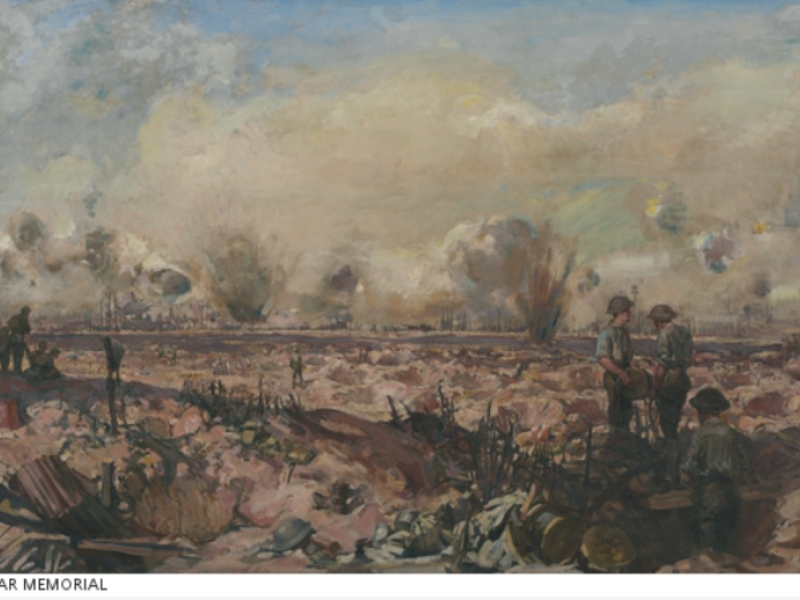Private John Reeves, 5th Battalion, AIF
John Reeves was born in 1890 to William and Julia Reeves of Lilydale, Victoria. His father was a miner, and after attending St Mary’s Roman Catholic School in Castlemaine, John and his younger brother, Thomas, both went into Thompson’s Foundry, where John worked as the foundry crane driver, and Thomas as an assistant boilermaker.
The brothers were known as “two of the finest Castlemaine footballers” to enlist in the Australian Imperial Force.
John enlisted in July 1915, a little over six months after Thomas. Like Thomas, he was posted to the 5th Battalion. However, before he had completed his training in Australia, the family received word that Thomas Reeves had been killed in action on Gallipoli in September 1915.
John Reeves left Melbourne on 29 December 1915 on board the troopship Demosthenes. He first travelled to Egypt, and then onto France, reaching the battlefields of the Western Front in May 1916.
Two months later, the 5th Battalion was involved in its first major action near the French village of Pozières. Two days after the 1st and 3rd Brigades captured the southern part of the village, the 5th Battalion entered the front line and attacked two strong German trenches to the northwest.
The attack was only partially successful, and the battalion suffered heavy casualties, including 45 killed, 250 wounded, and more than 150 missing.
Private John Reeves was one of those killed in action on 25 July 1916.
Little is known of the manner of his death, and the location of his body was unknown for many years. However, in 1936 a grave containing the bodies of two Australian soldiers was uncovered to the east of Pozières. While one of the bodies remained unnamed, the other was positively identified as Private John Reeves.
Both bodies were reinterred in the London Cemetery and Extension at Longueval. John Reeves was 26 years old.
Meleah Hampton, Historian, Military History Unit
Image: Painting “Bombardment of Pozieres” by artist Frank Crozier, 1918, depicts soldiers watching the artillery bombardment. The war damaged landscape contains barbed wire, shell holes and debris while shell bursts and explosions can be seen on the horizon.
The original accompanying text noted: “The village of Pozieres held up the left flank of the Anglo-French offensive in the first battle of the Somme in July 1916. After being attacked several times without success it became a major objective. The subsequent fighting, in which the 1st and 2nd Divisions were involved, was notable for massive artillery bombardments from both sides, the ferocity of which had never before been experienced by Australians. On no part of the front in France were German bombardments more severe than at Pozieres. The village quickly disappeared into rubble; the surrounding ground was churned and tortured until it resembled a choppy sea; men, weapons, equipment and defence positions were literally buried; approach routes were lined with dead.”
Crozier enlisted with the 22nd Battalion, AIF. In France, he served under Brigadier-General Gellibrand who asked Crozier to sketch the Battle of Pozieres.
- Australian War Memorial https://www.awm.gov.au/collection/C2278443

 Australian War Memorial
Australian War Memorial